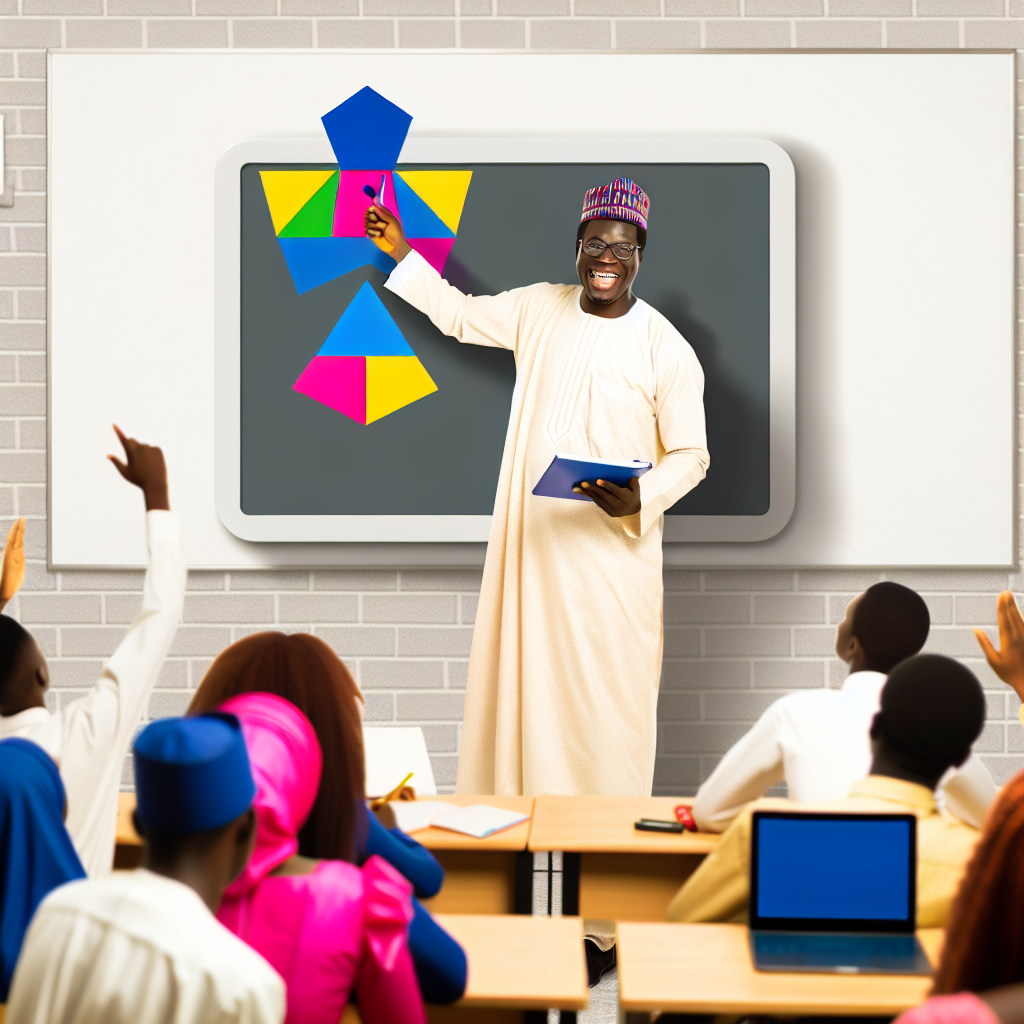Introduction
Innovative teaching methods play a crucial role in enhancing learning experiences in applied mathematics.
They help to cultivate critical thinking skills and problem-solving abilities.
However, traditional teaching methods often fail to engage students effectively.
This leads to challenges in understanding complex mathematical concepts.
Given the increasing demand for STEM-related skills in the job market, it is imperative to explore new approaches.
New methods should foster a deeper appreciation for mathematics among students.
By incorporating innovative teaching methodologies, educators can create a stimulating learning environment.
This environment promotes active participation and real-world application of mathematical principles.
Therefore, this blog post aims to delve into various innovative teaching methods.
These methods can revolutionize the way applied mathematics is taught and learned.
By leveraging technology, hands-on activities, and collaborative learning experiences, educators can enhance student engagement.
They can also improve comprehension in the field of applied mathematics.
Incorporating technology in the classroom
Utilizing technology in the classroom is a powerful tool for enhancing the learning experience.
By incorporating various technological tools, educators can create a dynamic and engaging environment that fosters student understanding and retention of mathematical concepts.
Integration of educational apps and software for interactive learning
One innovative teaching method in applied mathematics is the integration of educational apps and software to facilitate interactive learning.
These tools provide students with a hands-on approach to exploring mathematical concepts, allowing them to actively engage with the material.
- Educational apps such as Kahoot or Quizlet can be used to create fun and interactive quizzes that test students’ understanding of mathematical concepts.
- Software programs like GeoGebra or Desmos allow students to visualize abstract mathematical ideas through dynamic graphs and interactive demonstrations.
- By incorporating these tools into classroom activities, educators can create a more engaging and interactive learning environment that caters to different learning styles.
Use of virtual simulations to demonstrate real-world applications of mathematical concepts
Another effective teaching method is the use of virtual simulations to demonstrate real-world applications of mathematical concepts.
Virtual simulations provide students with a practical and immersive way to explore how mathematical principles are applied in various contexts.
- Virtual simulations can simulate real-world scenarios, such as financial modeling or physics experiments, allowing students to see the practical implications of mathematical concepts.
- By engaging with these simulations, students can develop a deeper understanding of how mathematical concepts are used in everyday life and various fields of study.
- In addition, virtual simulations can help students bridge the gap between theoretical knowledge and practical application, enhancing their problem-solving skills and critical thinking abilities.
Benefits of technology in improving students’ understanding and retention
The incorporation of technology in the classroom offers a range of benefits that can enhance students’ understanding and retention of mathematical concepts.
By leveraging technology, educators can create a more interactive and personalized learning experience that caters to individual student needs.
- Technology can provide instant feedback to students, helping them identify and correct misconceptions in real-time.
- Interactive tools can adapt to students’ learning pace and style, allowing them to progress at their own speed and grasp concepts more effectively.
- By incorporating technology, educators can create a more engaging and dynamic learning environment that motivates students to actively participate in the learning process.
Integrating technology into the classroom through educational apps, software, and virtual simulations is an innovative approach to teaching applied mathematics.
By leveraging these tools, educators can create a dynamic and interactive learning environment that enhances students’ understanding and retention of mathematical concepts.
Innovative Teaching Methods in Applied Mathematics
Project-based learning approach
Project-based learning is an innovative teaching method that engages students in hands-on projects that apply mathematical principles.
This approach goes beyond traditional lecturing and textbooks, allowing students to actively participate in real-world scenarios.
- Engaging students in hands-on projects that apply mathematical principles
- Encouraging collaboration and problem-solving skills
- Showcase of student work to enhance motivation and sense of accomplishment
Engaging students in hands-on projects
Implementing project-based learning in applied mathematics involves creating opportunities for students to work on real-world problems.
By engaging in hands-on projects, students can see the relevance of mathematical concepts and how they can be applied in various situations.
Encouraging collaboration and problem-solving skills
Collaboration is a key component of project-based learning in applied mathematics.
Students work together in groups to solve complex problems, utilizing each other’s strengths and skills.
This fosters teamwork and enhances problem-solving abilities.
Showcase of student work
One of the benefits of project-based learning is the opportunity to showcase student work.
By displaying projects and presentations, students feel a sense of accomplishment and pride in their achievements.
This can boost their motivation and morale.
Project-based learning is a powerful teaching method in applied mathematics that promotes student engagement, collaboration, and critical thinking skills.
By incorporating hands-on projects and showcasing student work, educators can create a dynamic and interactive learning environment that motivates students to excel in mathematics.
Discover More: Applied Chemistry vs Pure Chemistry: Key Differences
Innovative Teaching Methods in Applied Mathematics
The flipped classroom model is a teaching approach that reverses traditional teaching methods.
Instead of the typical lecture format in class, students review material at home and engage in practical activities during class time.
- Increased student participation and engagement
- Students are more actively involved in their learning process, leading to higher engagement levels.
- Personalized learning experience for students with varying learning styles.
- By allowing students to review material at their own pace, the flipped classroom model caters to different learning styles.
Gain More Insights: Economic Benefits of Nigerian Agricultural Economics
Gamification of Learning
One innovative teaching method in applied mathematics is the gamification of learning.
By turning math education into a game-like experience, students can have fun while learning.
Transform Your Career with Expert Guidance
Get personalized mentorship consulting that’s tailored to your unique path. Our expert advice is actionable and exclusive.
Get StartedDesigning Math-Related Games to Make Learning Fun and Interactive
Teachers can create math-related games that are both entertaining and educational.
These games can range from digital platforms to traditional board games that help reinforce mathematical concepts.
Rewards and Incentives to Motivate Students to Excel in Mathematics
Offering rewards and incentives can motivate students to perform better in mathematics.
These can be in the form of prizes, extra credit, or simple recognition for their achievements.
Implementation of Competition and Leaderboard to Foster Healthy Rivalry Among Students
Introducing healthy competition among students through leaderboards can drive them to excel in math.
By showcasing top performers, students are motivated to improve their skills and strive for the top spot.
Learn More: Preservation Challenges of Nigerian Archaeological Sites

Innovative Teaching Methods in Applied Mathematics
When it comes to teaching applied mathematics, using real-world examples is essential for students to understand and appreciate the relevance of mathematical concepts in everyday life.
By bridging the gap between theory and practice, educators can enhance students’ understanding and engagement.
Here are some ways in which real-world examples can be integrated into the teaching of applied mathematics:
Connecting mathematical concepts to everyday situations and applications:
- Using examples from fields such as engineering, physics, finance, and biology to demonstrate how mathematical principles are applied in real-world scenarios.
- Showcasing how concepts like algebra, calculus, and statistics are used in various professions to solve practical problems.
- Illustrating how mathematical models are used to predict outcomes in areas such as weather forecasting, stock market analysis, and population dynamics.
Bridging the gap between theory and practice:
- Encouraging students to work on projects that involve applying mathematical concepts to solve real-world problems.
- Organizing field trips to industries or research centers where mathematics is used in practical applications.
- Inviting guest speakers from different professions to share their experiences of applying mathematics in their work.
Enhancing students’ appreciation for the relevance of mathematics in the real world:
- Engaging students in discussions about the importance of math in various aspects of daily life, from budgeting and cooking to sports and technology.
- Highlighting the role of mathematics in advancements in fields like data science, artificial intelligence, and environmental sustainability.
- Encouraging students to explore the history of mathematics and its impact on shaping the modern world.
By incorporating real-world examples into the teaching of applied mathematics, educators can inspire students to see the practical value of mathematical concepts and foster a deeper understanding of their applications in various fields.
You Might Also Like: Important Publications in Nigerian Agricultural Economics
Active learning strategies
- Encouraging student-led discussions and problem-solving exercises
- Utilizing group activities and peer teaching to deepen understanding
- Emphasis on critical thinking and analytical skills development
Active learning in applied mathematics involves more than just lecturing to students.
It requires engaging them in the learning process, making them active participants in their education.
By implementing innovative teaching methods, educators can create a more dynamic and interactive learning environment.
This fosters deeper understanding and retention of mathematical concepts.
Encouraging student-led discussions and problem-solving exercises
One effective way to promote active learning in applied mathematics is by encouraging student-led discussions and problem-solving exercises.
By giving students the opportunity to engage with the material in a hands-on manner, educators can help them develop a deeper understanding of mathematical concepts and principles.
When students are actively involved in discussing and solving problems, they are more likely to retain the information and apply it in real-world situations.
This approach also helps foster critical thinking skills and analytical reasoning.
Students learn to approach problems from different perspectives and consider multiple solutions.
Utilizing group activities and peer teaching to deepen understanding
Another valuable tool for promoting active learning in applied mathematics is utilizing group activities and peer teaching.
By working collaboratively with their peers, students can deepen their understanding of complex mathematical concepts through discussion, collaboration, and problem-solving.
Group activities allow students to learn from one another, share different perspectives, and collectively work towards a solution.
Peer teaching also enhances students’ communication and leadership skills.
Students take on the role of explaining and teaching concepts to their classmates.
Emphasis on critical thinking and analytical skills development
An essential aspect of active learning in applied mathematics is the emphasis on critical thinking and analytical skills development.
By challenging students to think critically about mathematical problems and analyze the information presented, educators can help them develop valuable skills.
These skills are applicable in various fields.
Encouraging students to question, evaluate, and synthesize information deepens their understanding of mathematical concepts.
This prepares them for solving complex problems in the real world.
Through active engagement with the material, students learn to approach challenges with a logical and analytical mindset.
This leads to more effective problem-solving strategies.
Significance of Innovative Teaching Methods in Applied Mathematics
Revisiting the significance of innovative teaching methods in applied mathematics, it is clear that these approaches are essential for engaging students and fostering a deeper understanding of the subject.
Continual exploration and implementation of new teaching strategies are crucial to keeping up with the evolving educational landscape and meeting the diverse needs of learners.
Educators must be willing to adapt and evolve their teaching practices to ensure that students are equipped with the skills and knowledge needed to succeed in a rapidly changing world.
Additional Resources
(PDF) Secondary School Students’ Assessment of Innovative …
Multimedia tools in the teaching and learning processes: A …




